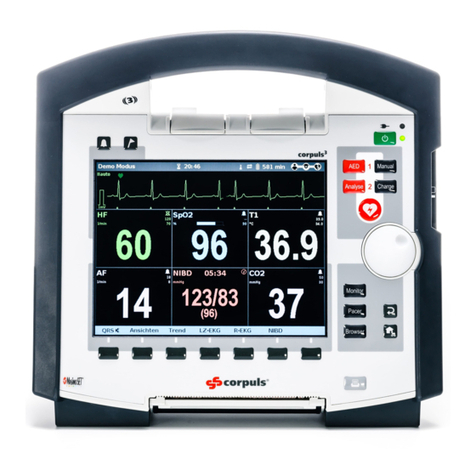9ENG - Version 2.2 - P/N 04131.02
Manual Defibrillation/Cardioversion
Debrillation/Cardioversion with
corPatch Therapy Electrodes
Attach the corPatch therapy
electrodes to the thorax of the
patient as shown on the packa-
ge and connect to the therapy
master cable, if necessary.
1. Press the Manual key (item 1) for a
quick boot-up in manual debrillation
mode.
2. Select the required energy level with
the jog dial or via the softkeys.
3. Press the Charge key (item 2) to start
the charging process.
4. To perform debrillation or cardioversi-
on, hold down the Shock key (item 3)
until the shock has been delivered.
Debrillation/Cardioversion with Shock Paddles
1. Press the Manual key for a quick boot-
up in manual debrillation mode.
2. Select the required energy level with
the jog dial or via the softkeys.
3. Apply sucient electrode gel onto
the surface of the shock paddles and
place them on the patient’s thorax.
4. To start the charging process, briey
press one of the shock paddle buttons.
5. To perform debrillation or cardioversi-
on, press both shock paddle buttons
simultaneously and hold down until
shock has been delivered.





























